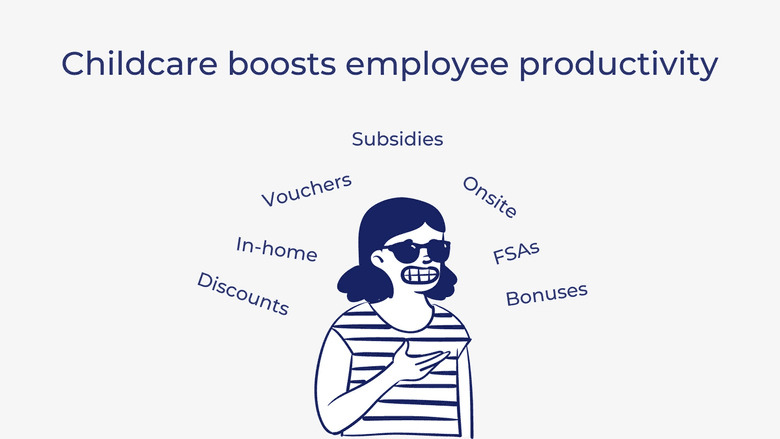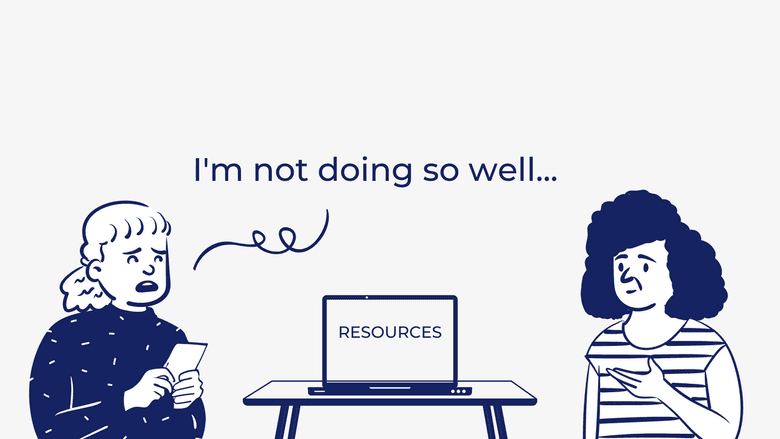5 Ways Companies Can Help Women Get Their Careers Back on Track
The pandemic has derailed women’s careers. Here’s how companies can help them get back on track.
A whopping 8.4 million jobs were lost between February 2020 and March 2021 due to the coronavirus pandemic, of which women bore the brunt. Job cuts, lack of childcare and school closures forced nearly 3 million women to leave the workforce, according to federal labor stats. This pushed female workforce participation to its lowest point since 1988 and has led to what’s known as a “she-cession” as women’s careers are derailed at a disproportionate rate.
These sobering stats are likely due to inequalities that predate the pandemic, where working women shoulder the majority of parenting duties. An analysis from the Center for American Progress found that millennial mothers are three times more likely to say they can’t work during the pandemic because of childcare duties than millennial fathers.
Employers play a major role in reducing or exacerbating gender inequalities at home. With paid maternity leave being the norm (just 40% of employers offer paid leave for both parents), fathers typically have no choice but to continue working after a child is born, setting a precedent for working mothers to take on more child-rearing responsibilities than fathers.
This article will discuss what to look for in your next role if you’re trying to return to the workforce or supercharge your career, whether you’re a parent or plan to become one.
1. Employee Child Care Benefits

Some employers have begun offering child care subsidies to help mothers return to work.
Typically, these subsidies take the form of:
- Flexible spending accounts (which allow parents to spend up to $5,000 in pre-tax dollars).
- Bonuses to cover childcare and pandemic-related education expenses for children below age 13.
- Some offer vouchers to reimburse childcare costs in full or in part, pay for backup child care if babysitting arrangements fall through, or provide referrals for childcare providers—bulk discounts may be available if other employees use the service.
However, only around one in four employers offer child care assistance—including Dell, KPMG, Bank of America, Intel and Salesforce—so do your research. In October 2018, Starbucks announced it would subsidize 10 days of backup child care for its employees.
Providing support for child care reduces the costs of absenteeism from working parents whose child care arrangements fall through. In a typical year, employers lose $13 billion in potential earnings, productivity and revenue due to inadequate child care resources, according to a 2019 report from the Council for Strong America.
Employers that provide childcare can claim an annual tax credit of up to $150,000 if they use it for qualified child care facilities and services.
2. Flexible Working Hours or Remote Work

The advent of digital communications technology has shown that more and more jobs can be worked remotely. While some employees are expected to be online and responsive during work hours, once you’ve established trust with your employer, it may be possible to work asynchronously rather than adhering to a 9-to-5 schedule.
Flexible work hours and remote work are becoming a mainstream expectation (52% of workers surveyed have attempted to negotiate a flexible arrangement), so don’t hesitate to ask while interviewing. While less common, some organizations like Unilever, Deloitte and KPMG allow staff to work a compressed four-day week; others offer flexible daily hours.
3. Work/Life Balance and Mental Health Days

Work/life balance means that your priorities for work and your personal life are in equilibrium. In other words, you work reasonable hours, have weekends off and aren’t plagued by anxiety (or emails) after hours.
According to a FlexJobs’ survey:
“Working parents rank work-life balance (84 percent) ahead of salary (75 percent) when considering whether or not to take a job.”
While the burden often rests on the worker to set boundaries, companies should proactively promote work/life balance for the long-term wellbeing and productivity of their workforce.
Overtime
Ask whether overtime is expected, how much advance notice you’ll receive, and whether your company has overtime requirements per fiscal year. Companies like Apple are notorious for expecting their staff to pull all-nighters with little advance warning. If HR offers hazy details at best, dig through employee reviews online.
“I've been in meetings at 4pm where a dozen people decide we are going to all work all night that night in the office on a problem,” one Quora user, a former Apple employee writes. “No discussion about "hey, I have to pick up my kids" or "let me call home first" — everyone nods and agrees, no hesitation.”
Communication
Many companies will specify expected response times for emails, instant messages, phone calls and other communications for employees who work remotely--check to see if they’re reasonable.
Setting boundaries and restricting hours are also important. If your boss emails you after hours, are you expected to respond promptly? Even if the employee handbook says ‘no,’ your boss might insist otherwise.
Vacation policy
Carefully evaluate the company’s vacation policy. Critically weigh the pros and cons of unlimited vacation, as appealing as it may sound. Stats show that employees with unlimited PTO tend to take fewer days off than those with allotted PTO. When you have a set number of vacation days, your employer is incentivized to encourage you to take time off to avoid paying accrued PTO at the end of the fiscal year for unused vacation days. An unlimited policy eliminates that incentive.
If your company offers unlimited PTO, be upfront about your concerns. Most workers feel guilty about taking time off if their manager or coworkers don’t. On the other hand, if one person takes advantage and claims too many PTO days, the rest of the team might have to pick up the slack.
If the person interviewing you is your prospective boss, ask how much time he or she takes off each year, and use that as a yardstick for your own vacation time. If it seems on the low side, ask about negotiating more days off.
Unlimited PTO isn’t technically “unlimited”—most companies have unspoken rules about the minimum and maximum number of days an employee can take time off. Even if you don’t see it in the employee handbook, make sure to understand the informal policy.
Mental health days
A mental health day refers to sick time an employee claims for reasons other than physical illness. While there is a growing movement to destigmatize mental health issues in the workplace, many employers still do not consider mental health concerns as a legitimate reason to miss work.
Some employers offer periodic mental health days on top of regular PTO and paid holidays. In April 2021, LinkedIn surprised its employees with one week of PTO to help alleviate pandemic-induced burnout. Other companies provide a rolling mental health day, such as the last Friday of each month, for employees to take time off and recuperate.
Find out how much notice you are expected to give, and whether you have the option of half-days off.
4. Mental Health Benefits

Major employers have been increasing mental health resources during the pandemic to help their employees cope with the strain. Some 53% of 256 employers surveyed by the National Alliance of Healthcare Purchaser Coalitions reported providing special emotional and mental health resources for employees due to the pandemic.
Starbucks announced in March 2020 that it would give employees and their families 20 free counseling sessions a year. Kickstand Communications, a PR company, offers a monthly stipend to spend on mental and physical health care. The most common mental health benefit is free or subsidized access to wellness apps like Headspace or BetterHelp.
Don’t underestimate the importance of weighing mental health benefits alongside other remuneration-based benefits. After all, companies that invest in mental health resources for their employees are more likely to prioritize work/life balance and career development.
5. A Culture that Respects Working Parents

Does your workplace give employees autonomy, or are they micromanaged? Will your coworkers roll their eyes or make snide comments if your child interrupts a Zoom meeting? These seemingly minor factors will contribute to your overall sense of acceptance in your workplace.
If HR stigmatizes employment gaps with pointed questions about the five years you took off to raise your firstborn, it’s an indication that the company is less tolerant of the travails working parents endure from balancing competing priorities. Sixty-five percent of parents who took a break in their career after having kids said it was difficult to restart their careers.
Finally, trust your instincts. If your company exudes a macho, competitive culture where job titles and self promotion matter more than your actual contribution, there is naturally less trust in the workplace. Consequently, if you take a half-day off to take your child to the doctor or miss a meeting because the babysitter canceled, you’re more likely to face repercussions. Get a feel for whether the workplace culture is built on trust. Is management approachable and friendly? Do they show support for team members, even when they make mistakes? These might seem like generally important factors to look out for, but they’re of manifold importance when you’re a working parent.
The information provided herein is for general informational purposes only and is not intended to provide tax, legal, or investment advice and should not be construed as an offer to sell, a solicitation of an offer to buy, or a recommendation of any security by Candor, its employees and affiliates, or any third-party. Any expressions of opinion or assumptions are for illustrative purposes only and are subject to change without notice. Past performance is not a guarantee of future results and the opinions presented herein should not be viewed as an indicator of future performance. Investing in securities involves risk. Loss of principal is possible.
Third-party data has been obtained from sources we believe to be reliable; however, its accuracy, completeness, or reliability cannot be guaranteed. Candor does not receive compensation to promote or discuss any particular Company; however, Candor, its employees and affiliates, and/or its clients may hold positions in securities of the Companies discussed.
